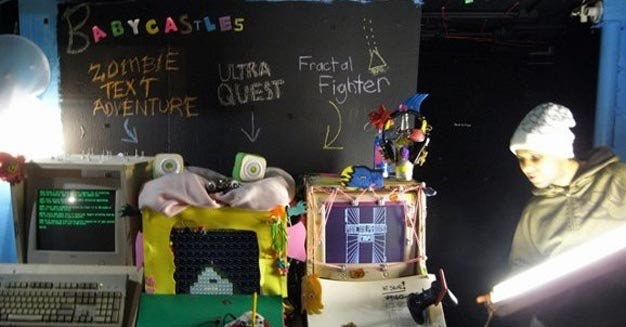Cabinets

I’m thinking more and more about arcades as alternative forms of exhibition. I’ve curated games and game arts at museums as well as galleries and DIY spaces. Babycastles exemplifies the kind of ultimate space open to exhibiting contemporary art, performance and also simultaneously having modular, DIY arcade cabinets easily able to be adapted to show art or to serve as hosts for various games. The form of arcade cabinet sets up a paradigm of interactivity rather than the traditional white-wall cube form that places art on a (sometimes literal) pedestal and at a remove from the audience.
Cabinet and arcade-style exhibition brings the audience and work together. Although this could turn an audience into users we can also think more favorably, imagining the audience as collaborators. Rather than completing the work through viewership, imagination and understanding the audience must play or interact. Artist Eddo Stern has described games as an ideal form to present interactive artwork for its inherent playability. There is a clear form, an interested community, and a history one could draw on or reject.
I’ve acquired a bunch of low-cost, free, dumpstered, Craigslist’ed, cast-off laptops, old and recent Raspberry Pi computers and clones. I have an idea of building ready-to-go exhibits as arcades of recent work.
Update: I did exactly this at several open studios at Universal Research Group and teach these concepts in my course Special Projects in Tiny Computing.
Some inspiration
- Joon Be’s Luggotron a sort of arcade cabinet built out of luggage (so that it could be compactly brought on a flight - wouldn’t security have stopped this?)
- UCLA GameLab’s Arcade Backpack with online blueprints.
- Babycade built by Joon Be and Copenhagen Game Collective. - I’ve been interested in building a shopping cart arcade cabinet, so this excited me.
- Oak-U-Tron 201X from Occupy Oakland, 2012, game Keep Me Occupied by Anna Anthropy, cabinet by rpm collective